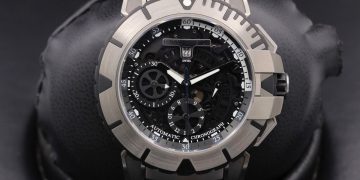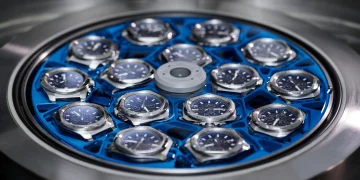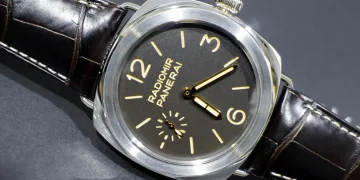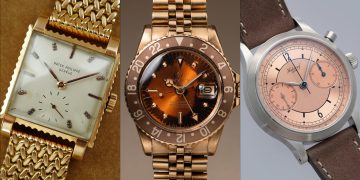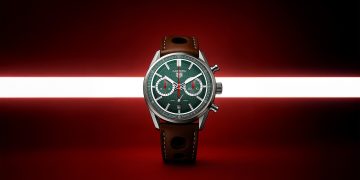Introduction:
High-end watches are more than just tools for telling time—they are intricate pieces of art, engineering, and craftsmanship. Whether it’s a Swiss mechanical masterpiece from brands like Patek Philippe, Audemars Piguet, or Rolex, or a luxury timepiece from other prestigious houses, these watches are designed with precision and built to last. However, because of the complexity, value, and craftsmanship involved, high-end watches often require a more specific and thorough maintenance regimen than standard timepieces.
In this article, we will explore whether high-end watches demand special maintenance procedures. We’ll discuss the unique requirements of these luxury timepieces, why they need special care, and how proper maintenance helps preserve their value, functionality, and longevity.
1. The Importance of Regular Maintenance for High-End Watches
High-end watches are not just about keeping time—they represent a fusion of tradition, craftsmanship, and innovation. Every detail, from the movement to the case, is carefully designed to ensure precision and aesthetic beauty. For these reasons, regular maintenance is essential to protect the investment that these watches represent.
1.1 The Complex Movements of High-End Watches
High-end mechanical watches typically use complicated movements (such as tourbillons, chronographs, or perpetual calendars), which contain hundreds or even thousands of tiny parts working together. Over time, these delicate parts can experience wear and tear, which could affect the watch’s accuracy and functionality.
For example, the lubrication of these intricate movements is crucial. High-end watches usually require oil changes and cleaning at regular intervals (every 3-5 years) to prevent the parts from wearing down due to friction. The precision involved in these timepieces means that even the smallest malfunction could cause a significant decrease in performance.
1.2 Preserving the Value of the Watch
A high-end watch is often viewed as an investment, and maintaining its functionality is directly tied to preserving its value. Over time, neglecting maintenance can lead to deterioration of the watch’s movement or other components, which could result in costly repairs or a reduced resale value.
Proper servicing from authorized service centers ensures that the watch retains its original specifications and functionality, which is important for collectors and those who plan to resell the watch later. For some luxury watch brands, having the documentation of regular servicing is necessary to maintain the watch’s authenticity and value.
2. Special Maintenance Procedures for High-End Watches
High-end watches often require specialized care, not only because of the materials used but also because of the attention to detail that goes into the construction of the movement and other components. Below are some maintenance procedures that are particularly important for high-end timepieces:
2.1 Lubrication and Movement Servicing
The movement is the most complex part of a high-end watch, and proper lubrication is key to ensuring smooth operation. Over time, the oils used to lubricate the movement components can degrade, leading to friction, wear, and reduced accuracy.
- Lubrication: High-end watchmakers use specialized oils for lubrication to reduce friction between moving parts, such as the gears and escapement. As these oils dry out over time, the watch’s precision can be affected. For luxury watches, having the movement cleaned and lubricated regularly by professionals is crucial. This service typically takes several days, depending on the complexity of the movement.
- Servicing: A full movement overhaul includes disassembling the watch, cleaning the parts, replacing the lubricants, and reassembling the watch. This ensures the movement works at optimal performance and can last for decades, if not longer.
2.2 Crystal and Case Maintenance
High-end watches are often made with premium materials, such as sapphire crystal for the dial window or precious metals like 18k gold or platinum for the case. These materials require careful handling and attention during servicing.
- Crystal Polishing: Sapphire crystals are known for their scratch resistance, but they can still develop marks over time. Regular maintenance can include professional crystal polishing to restore its clarity and smoothness. However, this process should be done carefully, as improper handling could result in further damage.
- Case Refinishing: High-end watches often have intricate case designs, with polished, brushed, or textured finishes. Over time, these finishes can show signs of wear, especially if the watch is worn frequently. Authorized watchmakers can carefully refinish the case, ensuring that it looks as pristine as the day it was purchased.
- Water Resistance Testing: The seals and gaskets of a high-end watch are integral to maintaining its water resistance. These components can degrade over time due to wear or exposure to moisture, leading to potential damage to the internal movement. During routine maintenance, watchmakers will check and replace any seals or gaskets that have worn out to preserve the watch’s water resistance.
2.3 Specialized Tools for Maintenance
High-end watches require specialized tools that are often unique to the brand or movement type. These tools are used to carefully handle and service the watch without causing damage. For example, certain high-end watches may use proprietary tools to open the case back or adjust the movement.
- Authorized Service Centers: Many luxury watch brands require servicing to be done at authorized service centers to ensure that the correct tools and procedures are used. These service centers have the expertise, training, and tools necessary to maintain the brand’s high standards, ensuring that the watch remains in top condition.
- Original Parts: When a part of the watch needs to be replaced, such as a crown, pushers, or movement components, it is crucial to use genuine parts from the brand. Using non-original parts can affect the functionality and aesthetics of the watch and could void any warranty.

3. Storage and Handling of High-End Watches
In addition to routine servicing, the storage and handling of a high-end watch are also critical to maintaining its condition. The way the watch is stored when not being worn can have a significant impact on its longevity.
3.1 Storing High-End Watches Properly
High-end watches should be stored in a safe, dry, and cool environment, away from direct sunlight, extreme temperatures, and humidity. Keeping the watch in a watch box or display case that provides protection from dust, scratches, and moisture is a good practice.
For mechanical watches, especially those with automatic movements, storing them in a watch winder can help keep the movement running smoothly, especially if they are not worn regularly. This is particularly important for watches with complicated movements, which rely on constant motion to keep time accurately.
3.2 Avoiding Harsh Conditions
While high-end watches are generally built to withstand everyday wear, extreme conditions can still take a toll on them. It is important to avoid exposing luxury watches to harsh environments, such as intense shock, extreme temperatures, or magnetic fields. Regular servicing can help ensure the watch remains in optimal condition, but careful use and proper storage are essential in preventing damage from the outset.
4. Cost of Special Maintenance for High-End Watches
It’s no secret that high-end watches come with a premium price tag, and the maintenance required for these watches can also be costly. However, the investment in regular maintenance is necessary to preserve the watch’s value and ensure that it continues to function as designed.
- Cost Factors: The cost of maintaining a high-end watch can vary depending on the complexity of the movement, the materials used, and the brand. For example, luxury brands such as Patek Philippe or Vacheron Constantin may charge more for servicing due to the intricacy of the movements and the use of premium materials.
- Warranty and Service Contracts: Many high-end watch brands offer service contracts or warranties that include regular servicing at a reduced cost. These contracts can help ensure that the watch is maintained according to the manufacturer’s standards, protecting the buyer’s investment.
5. Conclusion
High-end watches do require special maintenance procedures to ensure they continue to function at their highest level and maintain their value. From the complex movements inside the watch to the premium materials that make up the case and crystal, every aspect of a luxury watch demands attention and care.
Regular servicing, proper lubrication, professional cleaning, and the use of specialized tools and parts are just some of the unique maintenance requirements for these timepieces. For owners of high-end watches, investing in proper maintenance is not only a way to preserve the functionality of the watch but also to protect their investment for the long term.
By trusting authorized service centers, maintaining proper storage practices, and adhering to the recommended maintenance schedule, owners can ensure that their luxury timepieces continue to perform beautifully for years, if not generations, to come.



